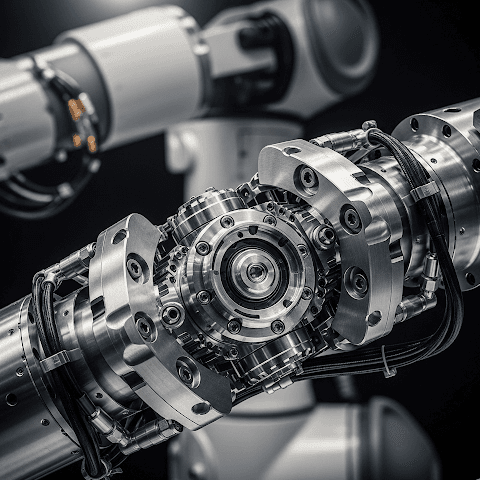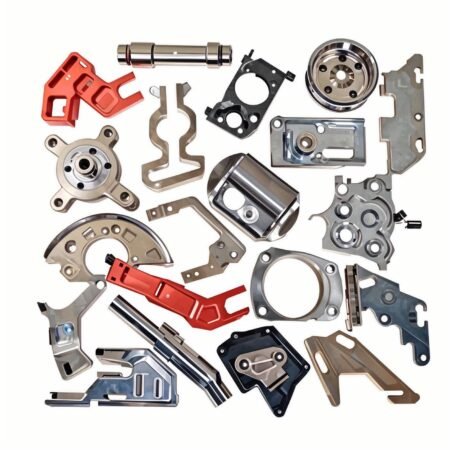Description
As a senior CNC machining engineer at ly-machining, I’ve spent over a decade orchestrating the transformation of raw metal blocks into the critical components that give modern robots their power and precision. The articulation of a robotic arm, the pivot of a mobile robot’s base, the grip of an end-effector—all depend on the absolute integrity of their joint connectors and structural parts. In the world of robotics, there is no room for error. This article provides a direct, technical overview of our CNC machining process for robotic joint parts, outlining the challenges, our solutions, and the uncompromising quality we deliver.
Our focus today is on a component central to robotic articulation: a multi-axis robot joint connector. This part, typically machined from aerospace-grade Aluminum 7075-T6 or high-tensile 4140 alloy steel, is not merely a structural element; it is the lynchpin of a robot’s kinematic chain, responsible for transferring torque, withstanding immense stress, and ensuring repeatable accuracy down to the micron level. For manufacturers of robotic systems, the performance of these robotic parts is non-negotiable, and our CNC machining services are engineered to meet that exacting demand.
The Core of Robotic Articulation
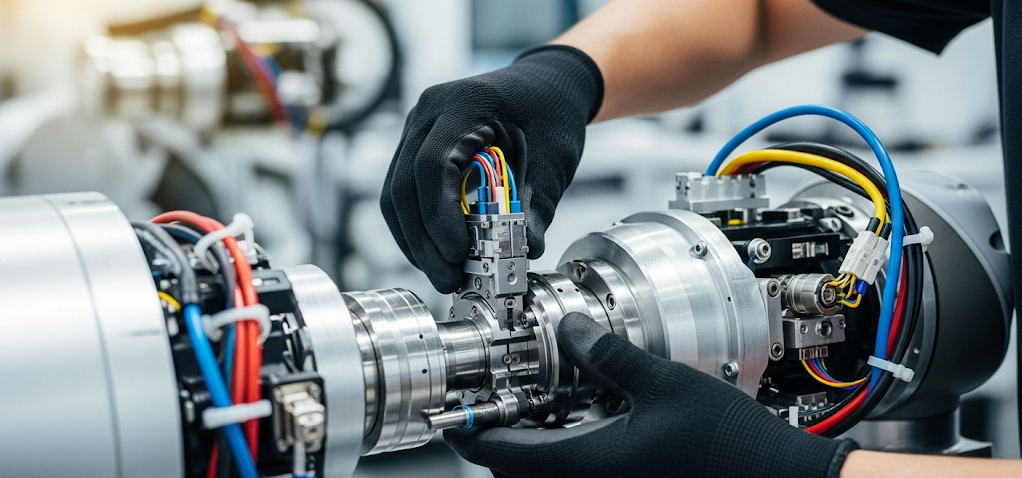
The robot joint connector is a marvel of compact, functional design. Its primary role is to create a strong, yet mobile, connection between two segments of a robotic arm or body. It must house bearings, route internal cabling, and provide precise mounting points for motors and encoders, all within a constrained physical envelope. The complexity of its geometry is dictated by the robot’s required degrees of freedom and payload capacity. Our expertise in CNC milling is fundamental to realizing these intricate designs.
Analysis of Machining Challenges: Where Precision is Forged
The journey from a digital model to a finished robotic component is fraught with technical hurdles. For robotic parts like joint connectors, these challenges are amplified. Our engineering team at ly-machining meticulously analyzes each project, anticipating and mitigating these issues from the outset.
- Complex Geometries & Multi-Faceted Features: Robot joints are rarely simple geometric shapes. They feature deep pockets, contoured surfaces, intersecting bores at odd angles, and thin walls. Machining these features without introducing stress or distortion requires sophisticated programming and machining strategies. A standard 3-axis machine simply cannot access many of these features in a single setup, leading to errors in repositioning. This is where our advanced 5-axis CNC machining centers become critical, allowing us to machine multiple faces of the part in one clamping, ensuring superior relational accuracy between features.
- Unyielding Tolerance Requirements: The specified tolerances for robotic parts are among the tightest in the manufacturing industry. We routinely work with tolerances of ±0.005mm (5 microns). This level of precision is essential for the proper seating of bearings, the alignment of drive shafts, and the elimination of “slop” or backlash in the robot’s movement. Achieving this requires not just capable machinery, but a thermally stable environment, high-precision cutting tools, and a robust quality control process using Coordinate Measuring Machines (CMM).
- Material Machinability and Integrity: The materials used, such as 7075-T6 Aluminum and 4140 Steel, are chosen for their high strength-to-weight ratio. However, they present unique CNC machining challenges. 7075-T6 is strong but can be susceptible to stress-induced deformation if machined too aggressively. 4140 alloy steel is tough and abrasive, leading to rapid tool wear that must be carefully managed to maintain surface finish and dimensional accuracy. Our deep understanding of material science informs our choice of cutting parameters—spindle speed, feed rate, and depth of cut—ensuring we maintain the material’s structural integrity.
- Surface Finish Control: The surface finish of a robot joint is critical for reducing friction, ensuring proper sealing, and preventing premature wear. A rough surface can act as a stress riser, potentially leading to fatigue failure. We typically achieve surface finishes of Ra 1.6 μm or better through precise CNC milling techniques and, when required, secondary finishing processes like grinding or polishing. This meticulous attention to surface quality is a hallmark of our CNC machining service.
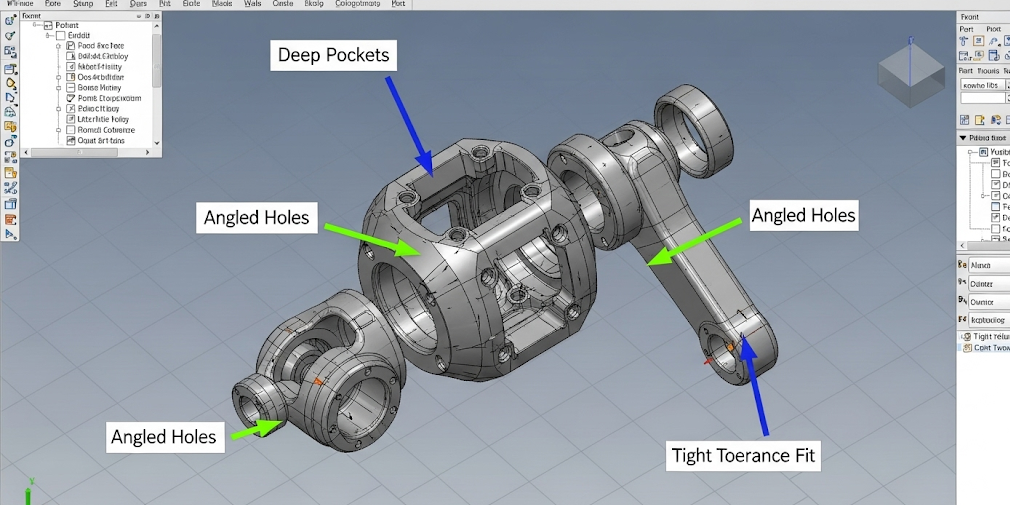
Our Machining Process: A Symphony of Technology and Expertise
At ly-machining, we have refined our production workflow into a seamless, quality-driven process. Every step is optimized for precision and efficiency, ensuring we deliver flawless robotic parts on time.
Engineering Review and CAM Programming Every project begins with a rigorous review of the client’s CAD files (e.g., STEP, IGES, X_T) by our engineering team. We analyze the design for manufacturability (DFM), identifying any features that could pose a challenge during CNC machining. This collaborative approach allows us to suggest minor design modifications that can significantly improve the part’s quality and reduce production cost without compromising its function. Once the design is finalized, our CAM programmers use advanced software (like SolidCAM or Mastercam) to create the optimal toolpaths for our 5-axis CNC milling centers. We utilize dynamic milling techniques, which can increase roughing efficiency by up to 50% while minimizing tool wear.
Material Preparation and Fixture Design We source certified materials from trusted suppliers, and upon arrival, every batch is verified using a spectral analyzer to guarantee its authenticity and compliance with specifications. The raw stock is then precisely cut to the near-net size required for machining. For complex robotic parts, we often design and machine custom fixtures. These fixtures hold the workpiece rigidly in the machine, preventing any vibration or movement that could compromise accuracy during high-speed CNC milling.
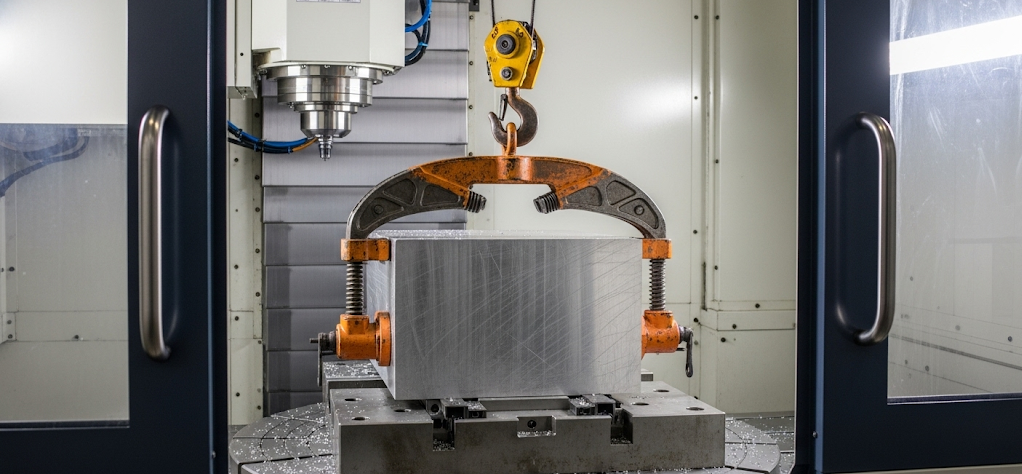
5-Axis CNC Milling This is where the transformation happens. The programmed G-code is loaded into one of our 26 advanced CNC machines. For a part like the robot joint connector, a 5-axis machine is essential. The process typically involves:
- Roughing: High-speed removal of the bulk of the material using robust end mills. Our dynamic milling strategies ensure this is done as quickly and efficiently as possible.
- Semi-Finishing: The machine then refines the part’s geometry, bringing it closer to the final dimensions and preparing the surfaces for the final pass.
- Finishing: Using high-precision ball-nose and finishing end mills, the machine executes the final passes at carefully controlled speeds and feeds. This step defines the final dimensions, achieves the tight tolerances, and creates the specified surface finish. The machine’s ability to tilt the tool or rotate the part allows us to machine complex curves and angled features in a single, continuous motion.
In-Process Quality Control We don’t wait until the end to check for quality. Our machine operators perform critical dimensional checks at various stages of the CNC machining process using calibrated digital calipers, micrometers, and bore gauges. This allows us to catch any potential deviations early and make necessary adjustments, ensuring the final part is perfect.
Deburring and Surface Finishing Once the CNC milling is complete, the part is carefully removed from the machine. Microscopic burrs at the edges of machined features are meticulously removed by hand by our skilled technicians. Depending on the client’s requirements, the part may then undergo secondary processes such as bead blasting for a uniform matte finish or anodizing (for aluminum parts) to increase surface hardness and corrosion resistance.
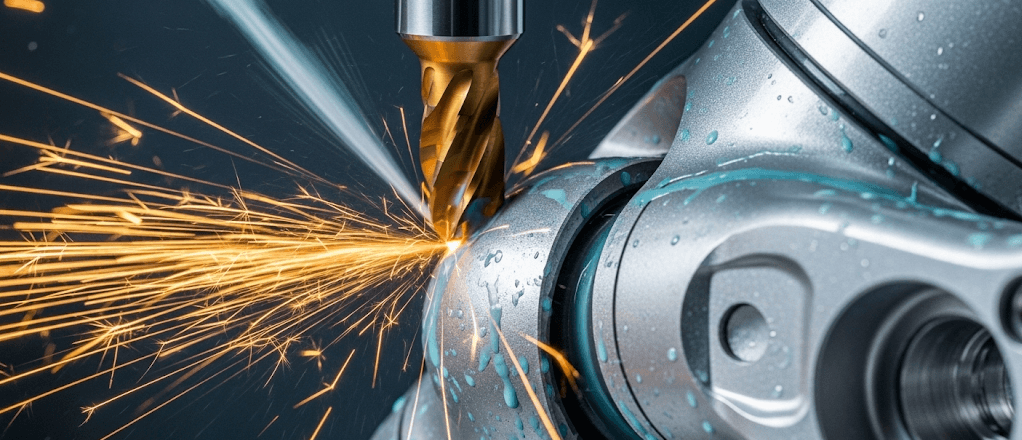
Final Inspection and Reporting Every single robotic component we produce undergoes a final, comprehensive inspection in our temperature-controlled quality lab. Using our state-of-the-art Coordinate Measuring Machine (CMM), we verify every critical dimension against the original CAD model. The CMM can measure points on a complex 3D surface with micron-level accuracy. We provide full inspection reports with every shipment, giving our clients complete confidence in the quality and compliance of their robotic parts.
Machining Results and Advantages: The ly-machining Guarantee
Choosing ly-machining for your CNC machining needs provides tangible benefits that directly impact the performance and reliability of your robotic systems.
- Unwavering Precision: Our investment in 6 4-axis and 8 5-axis CNC machines, combined with our rigorous process control, allows us to hold tolerances of ±0.005mm. This guarantees the perfect fit and function of your robotic parts, leading to smoother, more accurate, and more repeatable robotic motion.
- Superior Material Integrity: Our scientifically-backed machining strategies preserve the inherent strength and characteristics of the materials we work with. We avoid introducing internal stresses that could lead to component failure under load.
- Flawless Surface Finish: We consistently deliver surface finishes of Ra 1.6 μm or better, reducing friction and wear in your robot’s joints and extending the operational life of your equipment.
- Complex Geometries as Standard: What other shops see as a challenge, we see as a daily task. Our 5-axis CNC milling capabilities mean that complex designs are not an obstacle. We can produce highly integrated, lightweight, and strong parts that are optimized for performance.
- Guaranteed Consistency: Whether you need a single prototype or a production run of thousands, our process ensures every part is identical. This consistency is vital for building and maintaining fleets of robotic systems.
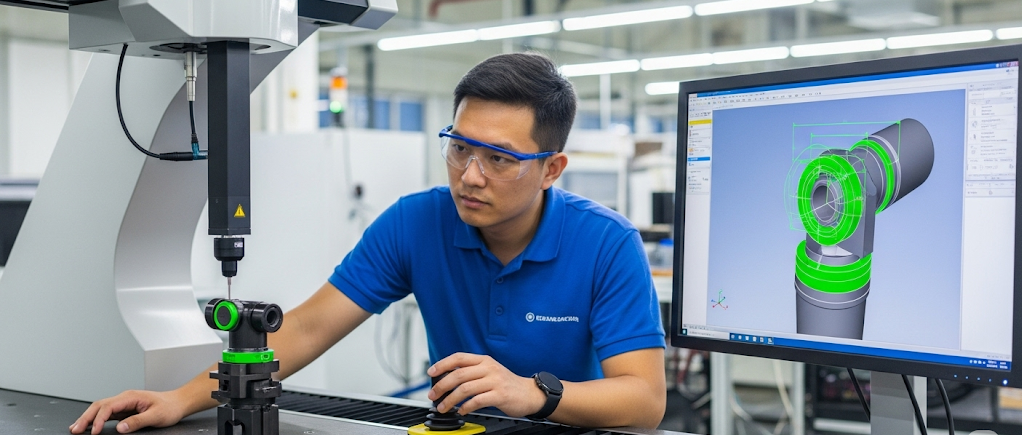
Property and Data Comparison Table
To illustrate the tangible benefits of our advanced CNC machining process, here is a comparison between our standard 5-axis approach for robotic parts and a more conventional 3-axis machining method.
Case Study: High-Payload Collaborative Robot Arm Joint
Client: A leading European developer of collaborative industrial robots.
Challenge: The client required a main shoulder joint housing for their new high-payload robot. The part was incredibly complex, featuring thin walls to save weight, a series of non-parallel bores for bearing assemblies, and integrated channels for internal hydraulic and data lines. The material was 7075-T6 aluminum, and the critical bore tolerances were ±0.008mm. Their previous supplier struggled with consistency and part deformation after machining.
Our Solution:
- DFM & Collaboration: Our engineering team conducted a DFM analysis and identified that a slight increase in the fillet radii in the deep pockets would significantly improve rigidity during CNC milling without affecting the part’s function. The client approved the change.
- Custom Fixturing & 5-Axis Strategy: We designed a two-stage custom fixture that held the part securely for both the initial roughing operations and the final finishing passes. Our 5-axis CAM program utilized smooth, trochoidal milling paths to minimize tool pressure and heat generation, preventing warping of the thin walls.
- Process Control: We implemented in-process probing cycles to verify the position of critical features before the final finishing pass. Tool wear was monitored automatically, and tools were replaced proactively to ensure a consistent surface finish.
- CMM Verification: Every finished part was validated on our CMM, with a full report provided to the client.
ly-machining successfully delivered an initial batch of 50 flawless joint housings. The parts met all dimensional and tolerance requirements, and their improved structural integrity, a direct result of our superior CNC machining process, contributed to the robot arm passing all fatigue and load testing. The client has since made ly-machining their exclusive partner for all critical robotic parts, citing our technical expertise, reliability, and the uncompromising quality of our CNC machining.
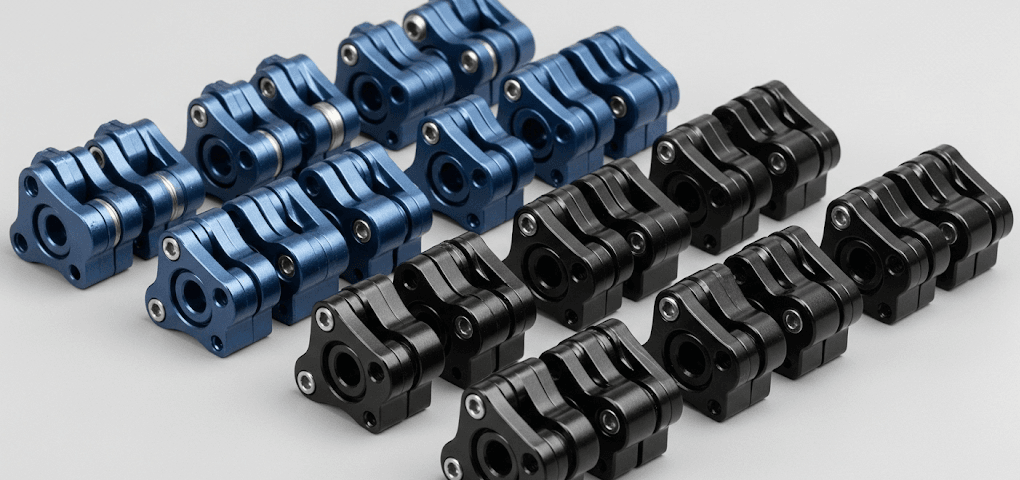
FAQ
As engineers, we believe in providing clear, direct answers. Here are three common questions we receive from our target customers in the robotics industry.
1. What is your typical lead time for complex robotic parts?
Lead time is dependent on part complexity, material availability, and current production capacity. However, for a part of medium complexity like the joint connector discussed, a typical prototype run (1-10 parts) can be completed in 2-3 weeks. For production runs, we establish a delivery schedule based on your requirements. Our efficiency, driven by 24-hour operation and advanced CNC machining technology, allows us to offer some of the most competitive lead times in the industry without sacrificing quality.
2. How do you ensure the quality and traceability of materials used for our robotic parts?
We understand that material pedigree is critical for robotic parts. We maintain a stringent supplier qualification process and source all materials from reputable mills that provide full certification documents (e.g., Mill Test Reports). Upon receipt, we use our own spectral analyzer to verify the alloy composition of the raw stock. This provides a dual layer of verification. All material certifications are linked to your specific job order and can be provided with the shipment, ensuring full traceability from raw material to finished component.
3. Beyond 5-axis CNC milling, what other capabilities can you offer for our robotic components?
While 5-axis CNC machining is our core competency for complex geometries, we offer a comprehensive suite of services to provide a one-stop solution for robotic parts. This includes CNC turning for cylindrical components (shafts, pins), wire EDM for intricate internal features or hard materials, and a wide range of surface treatments including anodizing (Type II & Type III Hardcoat), passivation, powder coating, and electroless nickel plating. We also have a network of trusted partners for services like heat treatment and gear cutting, managing the entire supply chain to deliver a complete, assembly-ready part to you.
For a partner that understands the rigorous demands of the robotics industry and possesses the engineering depth to execute, look no further. Contact the engineering team at ly-machining today to discuss your next CNC machining project.

